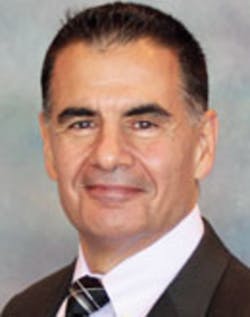Automating the patient financial assistance process to improve patient satisfaction
General Manager of Healthcare IT,
Quest Diagnostics
Known for its commitment to providing accessible care for the poor and underserved in its communities, a large integrated healthcare system in the Midwest had long embraced the critical role IT can play in the delivery of patient-centered, cost-effective, and accountable healthcare. That’s why it was only natural for the health system to set its sights on updating and automating its patient financial assistance process to create an improved experience for patients in financial need.
The system’s senior manager of integration and interoperability was looking specifically for a solution that would include the following:
- Use of existing and new technologies to exchange relevant data about patients who are uninsured or underinsured;
- identifying sponsorship or assistance programs that support patient needs; and
- making connections quickly, assuring patients of coverage and access.
“Our financial assistance program has always been designed around the patient, but with our paper-based qualification process, it would sometimes take weeks to screen cases and assist those with identified financial need. We knew we could do better,” the manager explained. “With an automated solution, we’d be able to change our workflow to exception-based processing, which would improve both productivity and speed.”
A solution integrated across dozens of hospitals
Turning to Quest Diagnostics as a long-standing partner, the organization chose to implement Quest’s ChartMaxx Patient Financial Assistance technology.
“We were excited about the Patient Financial Assistance solution because we knew it would integrate information from tools we were already using, such as our registration system, to create workflows for patients identified as needing assistance,” said the senior manager of integration and interoperability. “In addition, it’s web-enabled, uses single sign-on within an API, allows for real-time processing, and could be developed from the ground up to meet our requirements.”
Looking back over the implementation process, she recalled how important it was to take an iterative approach, one that involved end-users early-on, and often.
“You have to know your users and their workflow, and you need to review that many times to ensure you are on the right path,” she advised. “We continue to revisit and improve, working toward standardization across facilities wherever possible.”
The process is initiated as soon as a patient registers. The online smart application collects preliminary information and then filters it by defined parameters (Care Site, Fin Class, Patient Type, ICO Code, etc.). After integrating this data with other existing platforms, the Patient Financial Assistance tool performs calculations to determine a patient’s eligibility for sponsorship based on provided business rules. In addition, the system generates documents, such as letters to the patient, and creates tasks and reminders as appropriate to generate a complete application and final disposition of acceptance/denial.
“With this system, knowing exactly what information and documentation is required is simple and straightforward,” the manager said. “Plus, we get a real-time view of noncompliant registrations, allowing us to quickly correct mistakes and automatically direct tasks to appropriate teams. Completed applications are routed for approval, all the way to the CFO.”
Real-world results centered on efficiencies and patient care
Since implementing the ChartMaxx Patient Financial Assistance technology, the health system has noted significant improvements in the following areas:
- Efficiency. With the ChartMaxx application, a 13-step manual, paper-based process was reduced to just five steps—a 62% drop. For example, letters and worksheets automatically index to each patient’s account, eliminating the need for a separate scanning process in the billing department.
- End-user error reduction. The automated system performs calculations, automatically generates letters and sets approval levels, enforcing accuracy and ensuring a consistent, seamless process.
- Reporting. The ChartMaxx technology allows for exceptions-based reporting and enables the system to track patient status across various work streams. With all applications processed through the automated workflow, 100% of documentation is available for the system’s yearly Hospital Care Assurance Program (HCAP) audit.
- Personnel management and productivity. The streamlined workflow can monitor productivity, volume, and backlog automatically, eliminating the need for end-user monitoring and enabling the organization to reallocate staff to other essential areas and increase productivity by 30%.
- Cost savings. By automating the patient financial assistance process, the health system was able to reduce cost-to-collect across participating hospitals. One facility that adopted the technology early (in an initial implementation that started in 2001) has increased its cash flow by more than $56 million.
The value of the improved patient financial assistance process isn’t grounded solely in business process management metrics, however; it’s also grounded in better patient care. Now, users across the integrated system can easily exchange patient data, quickly identify relevant sponsorship programs, and grant real-time assistance qualification to patients in financial need, greatly improving patient satisfaction across the system.
“With an automated patient financial assistance process, we can devote our attention to where it matters most: the patient,” the senior manager of integration and interoperability concluded. “Not only is the process easier and more efficient for our employees, but when patients start off with a registration that’s smooth and enjoyable—letting them know exactly where they stand financially—that makes their whole experience better.”



